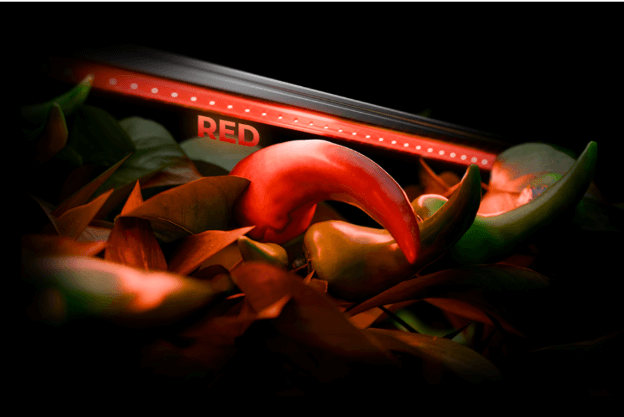As indoor and greenhouse cultivation continues to evolve, growers are discovering new ways to maximize plant health, efficiency, and yield. One technique gaining attention is the use of under-canopy grow lights—a lighting method that targets the often-overlooked lower portions of plants. But what exactly are under-canopy grow lights, and why should you consider using them in your grow setup?
In this post, we’ll break down what under-canopy lighting is, how it works, and why it’s quickly becoming a must-have in both hobby and commercial grow environments.

What Are Under-Canopy Grow Lights?
Under-canopy grow lights are lighting fixtures installed beneath or within the lower layers of a plant canopy to supplement light that typically fails to reach these areas. Unlike traditional top-down lighting systems, which illuminate plants from above, under-canopy lights are placed lower in the grow area, shining light upward or horizontally into shaded regions.
These lights are usually low-profile, low-heat LED bars, designed to be positioned close to the plant without causing heat stress or burns. Their primary purpose is to ensure that lower leaves, branches, and bud sites receive adequate light, an area where many traditional lighting setups fall short.
Why Top-Down Lighting Alone Isn’t Enough
In standard indoor grow setups, light is predominantly directed from above. While this effectively powers the photosynthesis of upper leaves and drives top growth, the thickening canopy can block light from reaching the lower parts of the plant. As a result:
- Lower leaves may yellow and drop due to a lack of light.
- Lower bud sites (in flowering plants like cannabis) remain small and underdeveloped.
- Plants focus their energy only on the top colas, leaving the bottom third of the plant underutilized.
This leads to wasted potential energy that could be harnessed for additional yield and quality if only the lower plant received enough light.
How Under-Canopy Grow Lights Help
Under-canopy grow lights fill in the light gaps, delivering photons to parts of the plant that would otherwise stay in the shadows. Here’s how that benefits your growth:
1. Improved Photosynthesis in Lower Foliage
More light means more active chlorophyll in the lower leaves. Instead of acting as a burden, these leaves can contribute to the plant’s energy production, supporting overall growth and efficiency.
2. Stronger Bud Development
For flowering plants, under-canopy lighting helps lower bud sites become fuller and denser, often reducing the amount of “popcorn” buds (small, airy flowers) and increasing the usable yield.
3. Even Canopy Growth
Balanced lighting from multiple directions helps plants grow more symmetrically. This not only looks better but also improves airflow and reduces the risk of mold or mildew.
4. Enhanced Light Penetration
The combination of top and under-canopy lighting increases total light saturation, improving overall plant metabolism and maximizing the efficiency of your grow space.
Do You Need Under-Canopy Lights?
The short answer: If you’re serious about maximizing yield, plant health, and quality, yes.
While under-canopy lighting may not be necessary for small-scale or very low-density grows, it’s highly beneficial in:
- Dense canopies where top light doesn’t reach the bottom
- Commercial or high-value crops like tomatoes or peppers
- Vertical farming or tiered growing systems
- Full-cycle grow rooms aiming for consistent, high-yield results
Even hobby growers with mid-size tents have seen noticeable improvements by adding supplemental lighting below the canopy.
Choosing the Right Under-Canopy Lighting
When selecting under-canopy grow lights, consider the following:
- Form factor: Slim LED bars are ideal for easy placement.
- Spectrum: Red is best for flowering, blue for vegetative growth, or go with full-spectrum for all stages.
- Heat output: Choose low-heat lights to avoid plant stress.
- Durability: Waterproof or moisture-resistant fixtures are ideal in humid environments.
Final Thoughts
Under-canopy grow lights are more than just a trend—they’re a smart solution to a common limitation in indoor growing. By addressing the light-starved zones beneath your plant canopy, you’re giving your crops the light they need to thrive from top to bottom.
Whether you’re an experienced grower looking to fine-tune your setup or a beginner exploring ways to optimize your indoor garden, adding under-canopy lighting could be the missing piece in your grow strategy.
Your plants don’t just grow upward—they grow outward and downward too. Make sure every part of them gets the light it deserves.


